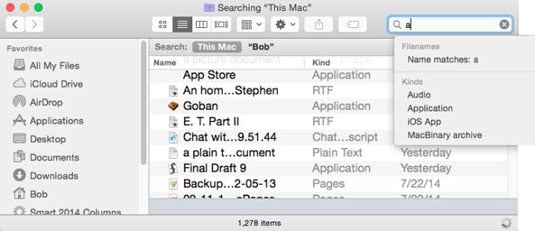

- FULL TEXT DESKTOP SEARCH FOR MAC HOW TO
- FULL TEXT DESKTOP SEARCH FOR MAC SOFTWARE
- FULL TEXT DESKTOP SEARCH FOR MAC PASSWORD
When you’re done making changes, press Control-X to exit the editor, Y to save, and Return to overwrite the existing hosts file.Īs we mentioned earlier, make sure to flush your DNS cache if you notice that your new mappings aren’t working properly. Because we launched Nano using sudo, any changes will be authenticated and saved directly to the original hosts file, without the need to copy it outside of its home directory.Ĥ. Just as we did with the TextEdit method above, we can add, edit, or remove hostname mappings at will. When the scan is complete, you can review any of the permissions issues it found in the window in the middle of the Disk Utility window. Anytxt is a rising star among free desktop full-text search tools. No matter where it is stored, Anytxt can instantly find every file, every document, and every code.

Free professional desktop search solutions can find all important information for you in record time. To navigate and edit the file in Nano, use the arrow keys on your keyboard.ģ. Your time is too valuable to be wasted on inefficient and ineffective searches-use Anytxt for fast and effective full-text file and document search. You’ll now see the hosts file open in the Nano editor or vim or another editor of your choice.
FULL TEXT DESKTOP SEARCH FOR MAC PASSWORD
As with all sudo commands, you’ll need to also enter your admin password to execute it: " sudo nano /private/etc/hosts“Ģ.

FULL TEXT DESKTOP SEARCH FOR MAC SOFTWARE
waveSDR - macOS native desktop Software Defined Radio application using the. The steps in the previous section are easy enough, but if you want to avoid copying the hosts file you can edit it directly in Terminal using the UNIX Nano Text Editor, which is built into macOS. The main goal of this repository is to find free open source apps and start.
FULL TEXT DESKTOP SEARCH FOR MAC HOW TO
Your Mac will then come through the speakers saying “DNS cache has been flushed.” How to Edit Your Mac Hosts File In Terminal With Nano


 0 kommentar(er)
0 kommentar(er)
